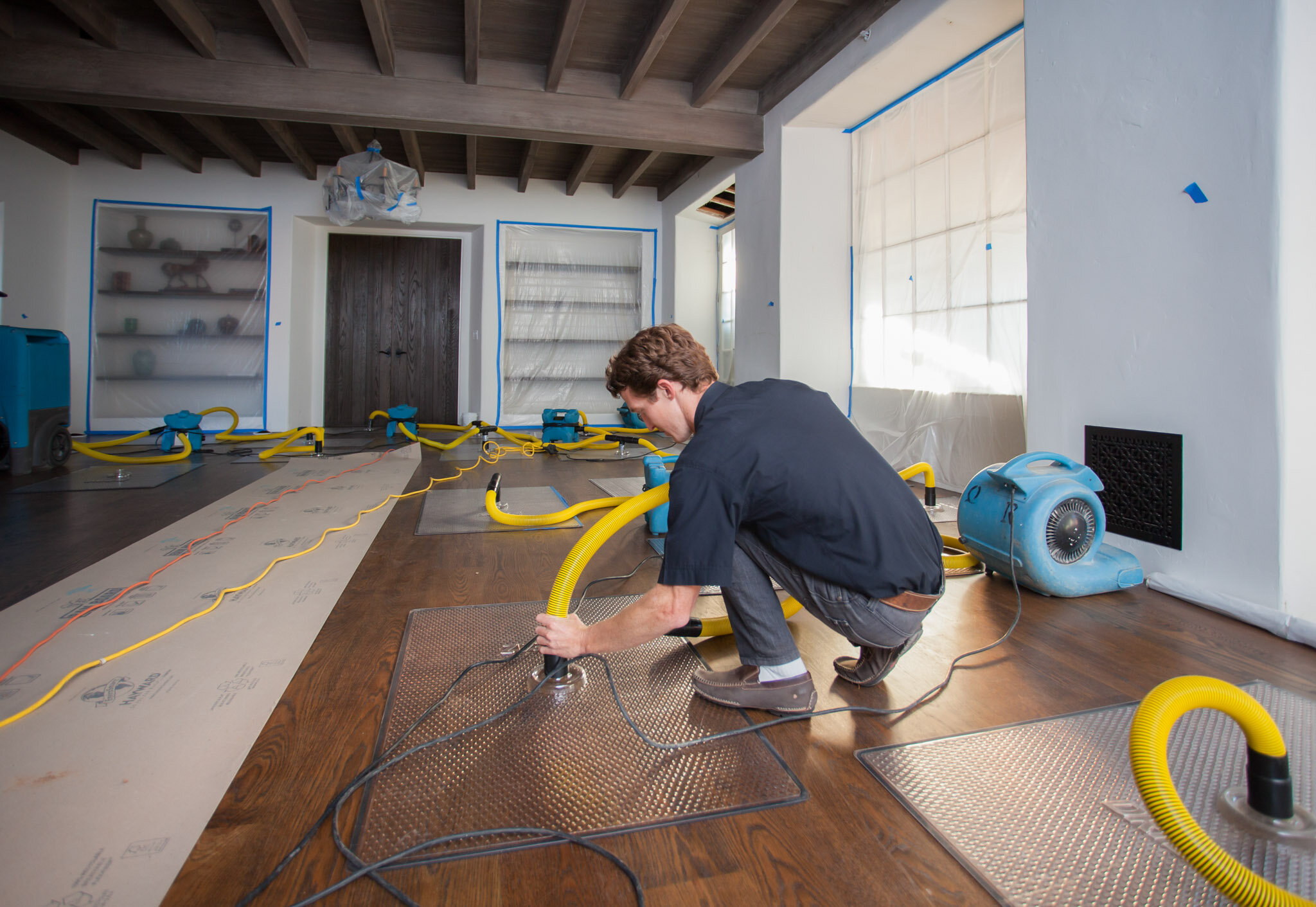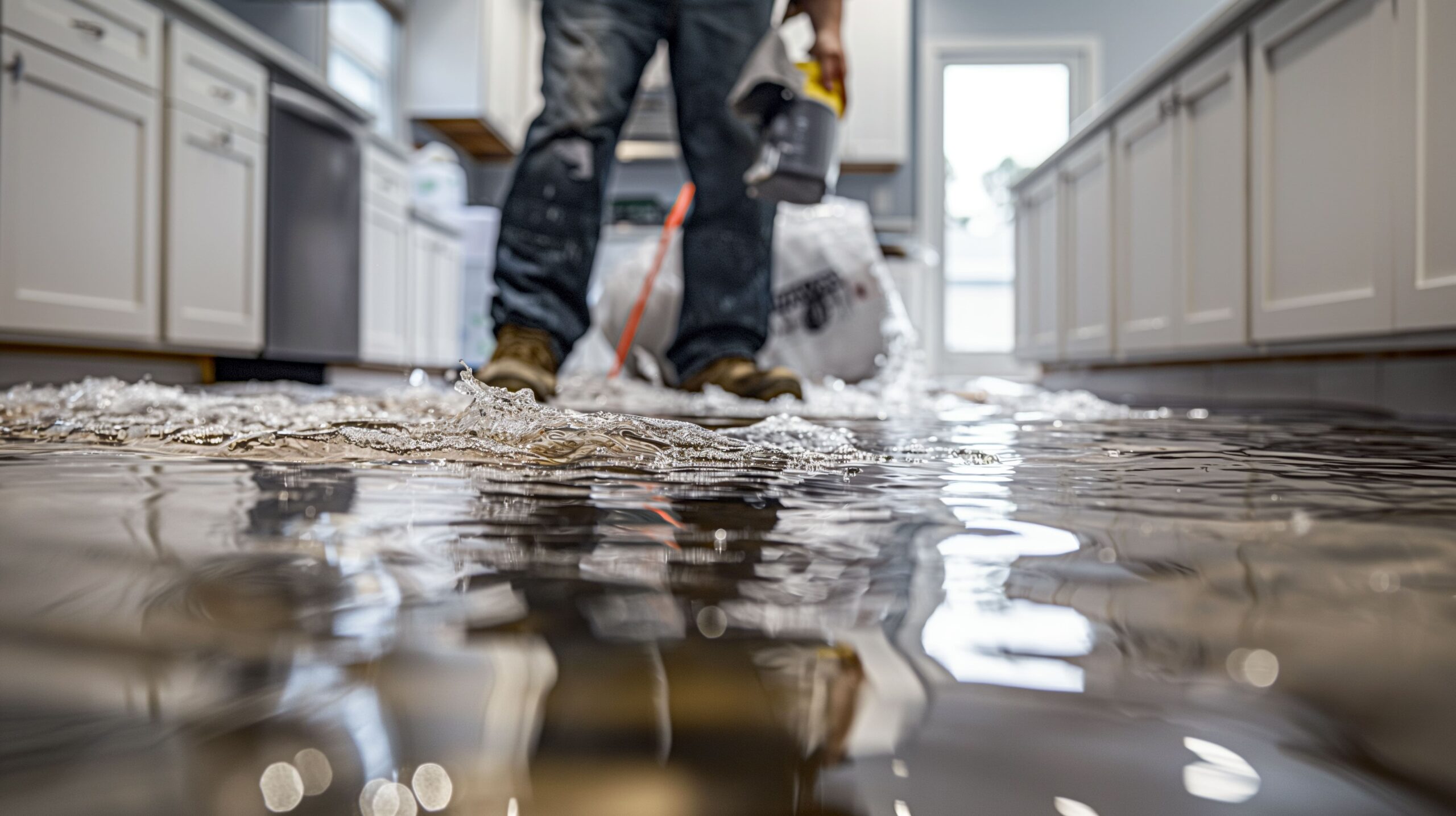Water Damage Restoration 101: Understanding the Process and Cost
Water damage can strike unexpectedly, leaving property owners in a state of complication. Understanding the restoration procedure is vital for effective healing. From assessing the damage to selecting the right provider, each step affects the total end result and price. Factors such as the kind of water damage and seriousness likewise play a considerable role. What are the particular methods used in repair, and exactly how can one get ready for prospective expenses?
Sorts Of Water Damage

Preliminary Analysis and Examination

Water Extraction Techniques
Following the first analysis, effective water removal techniques are employed to reduce damage and prevent additional problems. These strategies entail making use of specific equipment such as completely submersible pumps and industrial-grade vacuum cleaners - Water Damage Restoration. The choice of method depends upon the quantity of water present and the kind of materials impacted. For standing water, submersible pumps are usually used for rapid removal, while vacuum cleaners are optimal for removing water from carpetings and upholstery. Additionally, progressed techniques like water extraction floor coverings might be utilized for hard-to-reach areas - Flood Cleanup Services. The objective is to remove as much water as feasible, lessening the possibility for mold and mildew growth and structural damage. Prompt and effective water extraction is vital in the overall water damage remediation procedure
Drying and Dehumidification Process
As soon as the water extraction is full, the drying out and dehumidification process comes to be vital to bring back the damaged area. This stage normally utilizes industrial-grade dehumidifiers and air movers to effectively minimize moisture levels. The dehumidifiers reel in damp air, eliminating excess moisture, while air movers distribute air to accelerate dissipation. Monitoring equipment is usually used to track moisture and temperature levels, ensuring suitable drying problems. The duration of this process can differ depending upon the degree of the water damage and ecological factors. It is essential to completely completely dry all influenced products, including walls, flooring, and home furnishings, to prevent mold growth and structural damage. Appropriate execution of this step is crucial for a successful remediation outcome.
Cleaning and Disinfecting Afflicted Areas
Once the drying procedure is full, a thorough preliminary assessment and inspection of affected locations is vital to recognize contamination levels. Effective cleansing techniques and appropriate items must then be used to get rid of particles and discolorations. Sanitization and disinfection approaches are vital to guarantee that unsafe microorganisms are eliminated, restoring the room to a risk-free condition.
Preliminary Assessment and Inspection
Before starting any kind of repair efforts, a detailed preliminary analysis and evaluation of the affected areas are important for efficient cleansing and disinfecting. This process entails determining the extent of water damage, determining the resource of the water intrusion, and evaluating the products influenced. Assessors generally seek signs of mold growth, structural stability concerns, and damaged personal belongings. The evaluation additionally includes examining wetness degrees using customized equipment to assure no hidden water pockets continue to be, as these can lead to further problems. Recording the findings is necessary for intending the next action in the restoration procedure. A comprehensive first analysis allows reconstruction specialists to develop a targeted strategy for effective cleaning and sterilizing, inevitably reducing damage and health dangers.
Cleaning Methods and Products
Effective cleansing and disinfecting of water-damaged areas need a range of products and techniques tailored to the certain products influenced. For permeable surfaces like drywall and carpeting, extraction methods are necessary to get rid of excess moisture, complied with by deep cleaning with specialized cleaning agents. Non-porous products such as ceramic tile or More Bonuses steel can be cleansed utilizing commercial-grade cleansers that successfully remove contaminants. Steam cleaning is another reliable strategy, specifically for carpetings and furniture, as it uses high temperature levels to get rid of bacteria and mold (Water Damage Restoration). Furthermore, environment-friendly products are progressively prominent for their safety and security and efficacy - Water Extraction And Drying. Ultimately, choosing the suitable cleaning techniques and products not only assures instant cleanliness however likewise aids in protecting against further damage and health risks connected with water intrusion
Sanitization and Disinfection Methods
When attending to water damage, proper sanitization and disinfection approaches are vital to ensure the safety and health and wellness of the afflicted environment. After first cleaning, surfaces need to be treated with suitable anti-bacterials to get rid of pathogens, mold and mildew, and bacteria that grow in damp problems. Typical methods include the usage of EPA-approved chemical anti-bacterials, which can be used with spraying or wiping strategies. Additionally, ultraviolet (UV) light systems can efficiently disinfect areas by neutralizing microbes without severe chemicals. The selection of method usually depends on the kind of materials influenced and the extent of contamination. Eventually, extensive sanitization not just restores a risk-free home yet likewise helps protect against future health and wellness risks connected with sticking around moisture and mold development.

Repair Services and Restoration Options
Reviewing the damage created by water direct exposure is vital for identifying the proper repair services and reconstruction choices. Home owners might encounter numerous concerns, consisting of harmed drywall, deformed flooring, and jeopardized structural elements. Relying on the degree of the damage, repair services may involve replacing areas of drywall, mounting brand-new flooring, or reinforcing structural beams. In instances of serious damage, complete replacement of damaged products could be necessary. Additionally, expert restorers frequently recommend utilizing wetness meters to evaluate covert wetness degrees prior to determining on the most effective training course of action. It is essential to act quickly to avoid mold growth and further deterioration. Choosing the appropriate options not only brings back the residential or commercial property however additionally ensures long-lasting security and functionality.
Elements Influencing Restoration Costs

The level of water damage directly impacts the repair costs homeowners can anticipate to sustain. Factors such as the source of the water, the period of direct exposure, and the afflicted products substantially influence prices. Clean water damage from a busted pipe is usually less expensive to recover contrasted to damage created by sewage. Furthermore, the level of contamination determines the need for specialized cleaning and disposal solutions, further enhancing expenditures. Geographical location also contributes, as local labor prices and schedule of reconstruction services can vary. The urgency of the feedback impacts costs; quicker interventions usually lead to reduce general expenditures by protecting against more damage. Understanding these factors is crucial for home owners when approximating reconstruction prices.
The 3 key kinds of water damage are classified based on contamination levels: clean water, gray water, and black water. A thorough initial evaluation and inspection are vital steps in the water damage restoration procedure. For standing water, completely submersible pumps are typically made use of for quick elimination, while vacuum cleaners are excellent for removing water from carpetings and upholstery. The extent of water damage straight influences the reconstruction sets you back house owners can expect to sustain. Clean water damage from a busted pipe is normally much less expensive to restore contrasted to damage created by sewage.